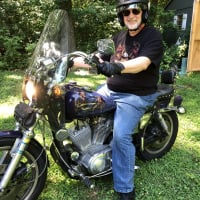Welcome to the new FlexRadio Community! Please review the new Community Rules and other important new Community information on the Message Board.
Need the latest SmartSDR, Power Genius, Tuner Genius and Antenna Genius Software?
SmartSDR v3.7.4 and the SmartSDR v3.7.4 Release Notes | SmartSDR v2.12.1 and the SmartSDR v2.12.1 Release Notes
SmartSDR v1.12.1 and the SmartSDR v1.12.1 Release Notes
Power Genius XL Utility v3.8.8 and the Power Genius XL Release Notes v3.8.8
Tuner Genius XL Utility v1.2.11 and the Tuner Genius XL Release Notes v1.2.11
Antenna Genius Utility v4.1.8
SmartSDR v3.7.4 and the SmartSDR v3.7.4 Release Notes | SmartSDR v2.12.1 and the SmartSDR v2.12.1 Release Notes
SmartSDR v1.12.1 and the SmartSDR v1.12.1 Release Notes
Power Genius XL Utility v3.8.8 and the Power Genius XL Release Notes v3.8.8
Tuner Genius XL Utility v1.2.11 and the Tuner Genius XL Release Notes v1.2.11
Antenna Genius Utility v4.1.8
If you are having a problem, please refer to the product documentation or check the Help Center for known solutions.
Need technical support from FlexRadio? It's as simple as Creating a HelpDesk ticket.
Need technical support from FlexRadio? It's as simple as Creating a HelpDesk ticket.
V2.0 DAX to support diversity for Digital modes??
Options

K3SF
Member ✭✭✭
I have read the SSDR manual regarding DAX and Diversity reception. My take away is Diversity reception right now (v1.x) is intended for headfone use only. Also read that DAX channel assignment is on a slice by slice basis. That is no two slices can use the same DAX channel.
Hence, with the DAX constraint, there is no way to use diversity reception with any of the digital modes.
Assuming i have correctly understood how DAX and Diversity, Will DAX be updated in some future V2.x to enable diversity reception to be used to drive the various digital modes?
OR
If i missed something on how V1.x works for DAX/Diversity please explain how it can be used for digital modes.
Thanks
Paul K3SF
Hence, with the DAX constraint, there is no way to use diversity reception with any of the digital modes.
Assuming i have correctly understood how DAX and Diversity, Will DAX be updated in some future V2.x to enable diversity reception to be used to drive the various digital modes?
OR
If i missed something on how V1.x works for DAX/Diversity please explain how it can be used for digital modes.
Thanks
Paul K3SF
0
Answers
-
In the audio diversity mode, the listener's brain does the integration and decoding of the two signals, one in each ear. In a digital mode, the digital audio client program (Fldigi, WSJT, etc) would need to do that job and as far as I know, none of these programs has the ability to listen to two audio sources simultaneously.
Supposing that WSJT (for instance) could do that, then radios with two SCUs (6600 and 6700) could, in principal, assign an antenna to each of the SCUs, then launch a Slice Receiver out of each SCU, then finally dump the audio into two DAX channels for processing by the digital client.
Perhaps you were thinking that the radio could mix down the two audio sources by assigning each of the slice receivers to the same DAX audio channel. I don't know if that works or not, but it would be easy enough to experiment with. If it did, then perhaps there would be an advantage, but I strongly suspect that the advantage would come if the digital client could process two streams at once instead of a mixed stream.0 -
I'm coming from a 6500 and ordered a 6600M. So the questions I have are, In diversity mode is it Stereo Diversity meaning each receiver in each audio channel Left and Right? And does Stereo Diversity use 2 DAX channels or 1?
0 -
hi Dave
As i understand current diversity uses the audio channel, DAX is not involved but the audio section of h/w acts a mixer. You are able to separate each slice by assigning how much left or right gain is applied...the more you move a slices audio to the left the more of the audio goes left and less goes right...this allow for two slice to be separate between left and right ear (left /right audio channel)
but
to get the best benefit from diversity is to NOT notice the fading QSB is actually happening...in essence combine both slices to center.
when done this way you always hear the loudest/strongest signal path. No processing is required by your brain to be an audio mixer...
I think, currently it could be done for digital modes by piping the audio (not DAX) out of the radio via soundcard and into the computer...but doing it this way introduces additional noise
and would not give the same signal to noise ratio if it was done with DAX mixer. Send the digital mode decoder the best single signal available.
With regard to your opening statement, let me say the following.
Left and right audio channel separation is beneficial when a DX station is working split. For Example, put DX station in left ear and the pileup in right ear...this take advantage of the brains psycho acoustics processing to spatial locate a sound of interest. ...this is know as the cocktail party effect...picking out a voice in the crowd by spatial separation...
i hope this help explains why i asked the question.
Paul K3SF
0 -
I had thought of this when I got my 6700, but in the context of noise reduction. I have a serious noise issue on 6 Meters from an unknown local source, and was hoping to use a 7-element yagi plus omnidirectional or other antenna to null out some noise. Seems like that could be a good use for diversity in digital modes.1
-
DAX does not support diversity, per se. Two slices that are synchronous (linked, working together) are used in diversity mode, one connected to each SCU. Each slice has it own DAX channel your digital mode program will have to take two independent audio inputs and do the audio "combining"; the radio is just providing the audio1
-
Tim - it would be cool if we could revise DAX (or generate a stand-alone utility) to feed A+B or A-B channels to a virtual DAX output. Kind of like a virtual serial port, but a virtual DAX port. I doubt I'm capable of writing something like that, but perhaps someone here on the forum could?
I imagine it could work like the I/Q output, with L and R inputs, and a mono output. Just dreaming...0 -
Tim
Thank you for that clarification. That is how i thought it currently worked but was looking toward the future.
I had thought as multi-client capability is being developed that such a capability might be considered as one of the use cases.
Also, I completely understand if not at liberty to say at this time.
0 -
Eric
With two scu's available a lot of digital processing could be done with their data.
One is the capability of a antenna noise canceller like the timeawave ANC-4.
The other could be an even more advance wideband noise reduction using two scu's data makes it easier to find coherent signal (real signals of interests which also include noise sources) vs non-coherent (atmospheric noise and other man made noise)
Also, could be used to adjust phase angle of two received signal from two received antenna..AKA beam steering for maximum gain
The real question is where does this processing occur...inside the radio or outside the radio?
That is fundamentally what i was trying to find an answer for.
0 -
Whatever we do, we'll do it inside the radio.2
-
Sounds great. I have an ANC-4, but it doesn't work well on the shelf and unplugged ;-) It sounds like there are some great ways to use diversity, and we may see them in the future. I am looking forward to that - wish I could contribute, but my chemistry background probably won't help. I am happy to be an alpha/beta tester.0
Leave a Comment
Categories
- All Categories
- 245 Community Topics
- 2.1K New Ideas
- 488 The Flea Market
- 7.3K Software
- 5.9K SmartSDR for Windows
- 134 SmartSDR for Maestro and M models
- 327 SmartSDR for Mac
- 241 SmartSDR for iOS
- 224 SmartSDR CAT
- 161 DAX
- 343 SmartSDR API
- 8.5K Radios and Accessories
- 6.9K FLEX-6000 Signature Series
- 768 Maestro
- 42 FlexControl
- 836 FLEX Series (Legacy) Radios
- 726 Genius Products
- 391 Power Genius XL Amplifier
- 251 Tuner Genius XL
- 84 Antenna Genius
- 221 Shack Infrastructure
- 149 Networking
- 369 Remote Operation (SmartLink)
- 118 Contesting
- 582 Peripherals & Station Integration
- 116 Amateur Radio Interests
- 810 Third-Party Software
